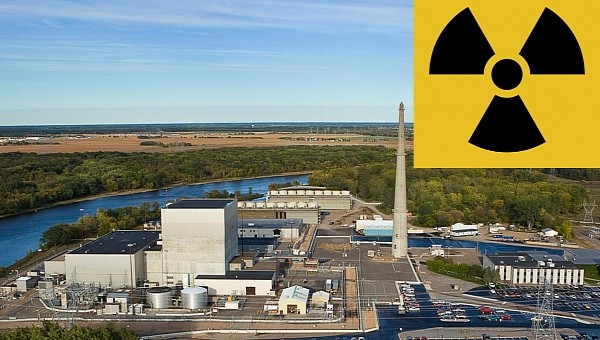As per a report by the Associated Press, upwards of 400 thousand gallons of potentially radioactive water has escaped containment at the Monticello Nuclear Generating Plant's nuclear reactor. The situation is stated to be under control by Minneapolis-based Xcel Energy company, which operates the plant. However, fears of wider contamination are still a point of worry for residents local to the reactor.
The 600 or so employees working at the facility were alerted to an anomaly somewhere within the reactor's coolant water tank on March 16th, 2023. No sooner were the first attempts at damage control underway than the first warnings of a problem sent to state and federal EPA branches. At this time, reports indicate that cleanup efforts are still ongoing.
Opened 52 years ago in 1971, the Monticello Nuclear Plant is one of the oldest reactor facilities operating in Minnesota. Since 2010, the facility has been home to a single General Electric BWR-3 boiling water reactor generating in excess of 650 MWe of useable electricity.
Located less than an hour from the heart of downtown Minneapolis, the reactor is a vital piece of infrastructure for the small towns and municipalities dotting the outskirts of the Twin City metroplex, also home to the famous Polaris ATV/UTV manufacturer located in nearby Wyoming, Minnesota.
The GE BWR class is one of the few nuclear reactor types in the world that breed tritium as a byproduct of nuclear fission. When harnessed and refined into useable material, this tritium can be used as fuel in various types of nuclear fusion reactors like Tokamaks and Stellarators.
But the U.S. Environmental Protection Agency warns that tritium is capable of escaping containment via breaches in coolant water pools located directly above or below reactor cores. In this instance, radioactive tritium has the potential to infiltrate the groundwater in the immediate vicinity of a breached reactor.
Though not as immediately poisonous or harmful the same way uranium or plutonium exposure often is, nuclear fissile material of any kind has the potential to lead to negative health effects in the event it's not properly contained or regulated.
"We knew there was a presence of tritium in one monitoring well. However, Xcel had not yet identified the source of the leak and its location," stated Michael Rafferty, a spokesman for the Minnesota Pollution Control Agency. "Now that we have all the information about where the leak occurred, how much was released into groundwater, and that contaminated groundwater had moved beyond the original location, we are sharing this information."
For the moment, the situation ongoing at the Monticello Nuclear Power Plant is not anticipated to escalate into an ecological disaster. But in the wake of one of the most destructive rail accidents in American history, taking place in February 2023, there's reason to suspect there's some past trauma magnifying the situation.
Opened 52 years ago in 1971, the Monticello Nuclear Plant is one of the oldest reactor facilities operating in Minnesota. Since 2010, the facility has been home to a single General Electric BWR-3 boiling water reactor generating in excess of 650 MWe of useable electricity.
Located less than an hour from the heart of downtown Minneapolis, the reactor is a vital piece of infrastructure for the small towns and municipalities dotting the outskirts of the Twin City metroplex, also home to the famous Polaris ATV/UTV manufacturer located in nearby Wyoming, Minnesota.
The GE BWR class is one of the few nuclear reactor types in the world that breed tritium as a byproduct of nuclear fission. When harnessed and refined into useable material, this tritium can be used as fuel in various types of nuclear fusion reactors like Tokamaks and Stellarators.
But the U.S. Environmental Protection Agency warns that tritium is capable of escaping containment via breaches in coolant water pools located directly above or below reactor cores. In this instance, radioactive tritium has the potential to infiltrate the groundwater in the immediate vicinity of a breached reactor.
Though not as immediately poisonous or harmful the same way uranium or plutonium exposure often is, nuclear fissile material of any kind has the potential to lead to negative health effects in the event it's not properly contained or regulated.
"We knew there was a presence of tritium in one monitoring well. However, Xcel had not yet identified the source of the leak and its location," stated Michael Rafferty, a spokesman for the Minnesota Pollution Control Agency. "Now that we have all the information about where the leak occurred, how much was released into groundwater, and that contaminated groundwater had moved beyond the original location, we are sharing this information."
For the moment, the situation ongoing at the Monticello Nuclear Power Plant is not anticipated to escalate into an ecological disaster. But in the wake of one of the most destructive rail accidents in American history, taking place in February 2023, there's reason to suspect there's some past trauma magnifying the situation.





